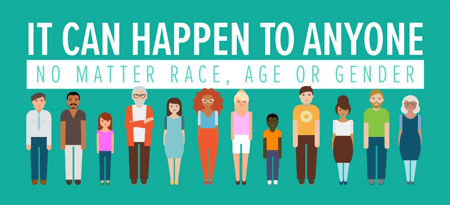Those at highest risk of any form of human trafficking are the vulnerable populations. As noted earlier, human trafficking is more common in people of low socioeconomic status or with children who experience abuse at home. While these are the most common, human trafficking does not discriminate. Red flags in spotting trafficking victims should be taught to all staff from the receptionist to the attending physicians to all ancillary departments. Everyone must be taught the signs of a potential victim the same way facilities train staff members to spot child and elder abuse.
Abuse can be emotional, physical, or sexual, and it can arise from emotional neglect, physical neglect, and family violence. All are prevalent among trafficked youths. Sexual abuse is the strongest predictor of human trafficking for both boys and girls. Those who have experienced sexual abuse in the home may be looking for a way to escape to a better life, only to find themselves manipulated into a trafficking situation.
Lack of caregiver protection from abuse in the home increases the likelihood of a child’s seeking protection from someone outside the home. Exposure to family violence is also an increased risk of human trafficking. Abusers will cultivate relationships with these young children or teens and they soon become victims. Trafficking of boys more commonly relies on emotional and sexual abuse (Reid et al., 2017).
According to the Department of Justice (2016), youth at risk for human trafficking include:
- Youth in the foster care system
- Young people who identify as LGBTQ
- Homeless or runaway youths
- Those with disabilities
- Youth with mental health or substance abuse disorders
- Youth with a history of sexual abuse
- Those with a history of being involved in the welfare system
- Those who identify as native or aboriginal
- Youth with family dysfunction (DOJ, 2016)
Traffickers will specifically target runaway or “throwaway” teens who are having trouble at home. They are seen as easy targets because they are looking for shelter and may not be old enough to legally get a job. It is common for these teens to trade sex to meet basic survival needs of food, shelter, and clothes (Roe-Sepowitz et al, 2013).
For welfare children, the California Child Welfare Council found that 50% to 80% of victims of commercial sexual exploitation are or were formerly involved with the child welfare system (OTIP, 2017). Teens and children from the lesbian, gay, bisexual, or transgender community are at risk because of psychosocial vulnerabilities that have resulted from social alienation or maltreatment experiences (Gorman & Hatkevich, 2016). LGBT youth are disproportionately runaway and homeless and can be up to 5 times more likely than their heterosexual peers to be victims of human trafficking (OTIP, 2017).
The population at risk for labor trafficking often come from unstable and economically devastated places. Traffickers frequently identify vulnerable populations characterized by oppression, high rates of illiteracy, little social mobility, and few economic opportunities (OTIP, 2017).

Source: DHS, 2017.
